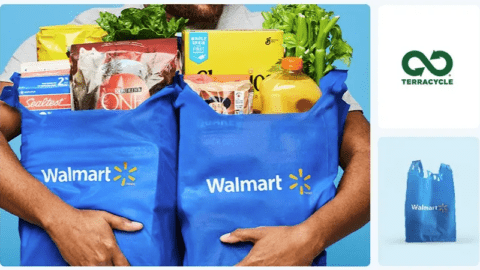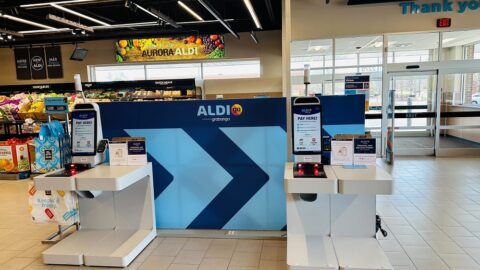Part II of “Gamification In Retail” reveals how gaming strategies drive social interaction, and ways retailers can determine the optimal rewards for their gamification strategy. Part III will appear in the March 27 newsletter. You can also read Part I here.
Loyalty programs and other incentives have been active in the retail marketing mix for generations. However, today’s innovative retailers are combining unique elements of social connectivity with gamification, and in turn, igniting competitive drive among consumers. As a result, the one-to-one, consumer/brand relationship is being remodeled to include multiple participants, with each vying for the same rewards and titles,
noted Scott Forshay, Strategist, Mobile and Emerging Technologies for Acquity Group.
“The competitive element of gamification normally is constructed in three primary ways,” Forshay explained. “First is the more traditional method where consumers compete almost with themselves to earn more credits, points, discount coupons, or priority access in their brand relationships. Second is competition within the consumer’s social graph, where leader board position, badges and other social currency become status symbols of sorts that drive increased participation in programs. Third is at-large participation, where the game is open to a broad audience of participants in a contest structure where real currency in the form of sweepstakes giveaways typically is at stake.”
Advertisement
However, consumers don’t want to feel like they’re being tricked, or “gamed” by brands, Forshay continued. Retailers must take a more subtle approach to gamification, which first was perfected by travel and hospitality brands via loyalty rewards programs.
“Showing loyalty to a particular airline or hotel brand has been rewarded by priority access, express lanes for check-in, and points that carry redeemable monetary value,” Forshay said. “These types of seasoned game mechanics incent loyalty and participation for mutual value between brand and consumer. They provide engagement, the ability to achieve status, and exclusive rewards for the most loyal participants.”
Determining The Efficacy Of Real And Virtual Rewards
Gamification applications and offerings such as FarmVille and foursquare harness the power of virtual rewards. From points to tokens and badges, consumers actively participate in digital events and challenges to win the status that aligns with these digital prizes. Similar applications, such as shopkick, utilize incentives such as coupons and discounted goods to increase shopper engagement at home and in store.
With the variety of gamification models and solutions currently available, many retailers are challenged to pinpoint the value of these tools and which gaming “style” is right for them. Both virtual and physical rewards can be compelling for consumers, according to Rajat Paharia, CEO of Bunchball, a gamification company that has worked with organizations including USA Networks, Bravo TV and Chiquita. To develop an effective strategy, it is imperative for a merchant to conduct a thorough analysis of its target audience, and how consumers respond to specific incentives.
“Some users will be happy with badges, trophies and other acknowledgements,” Paharia told Retail TouchPoints. “It certainly works for FarmVille, and it can work for gamification programs. In other circumstances, physical rewards make sense; we’ve seen our customers be very successful with both tactics. Again, it boils down to the audience, its expectations, and what will motivate consumers to take action.”
Furthermore, the success of virtual rewards, such as badges, coins, “mayorships” and points, relies heavily on how advanced a company’s social community is. If a retailer has a strong social strategy that operates on high levels of interaction and engagement, consumers will have greater incentive to participate, according to Adena DeMonte, Director of Marketing at Badgeville, a gamification and behavior management company that works with organizations including Samsung, Bluefly.com and Deloitte. The more active a social community is, the more eager and willing customers will be to share their participation levels and gaming successes.
“Virtual rewards are only as valuable as your site’s social context,” DeMonte explained. “Rationally, if we are to receive status that gives us no tangible benefits, and no one else sees this status, it is not that valuable. There are cases where the experience will never be social so it is better to reward behavior with tangible rewards.”
However, some merchants blur the lines between real and virtual rewards, according to DeMonte. For example, Badgeville customer Samsung ties tangible rewards to social communities to increase engagement. Every month, the company gives away a great electronic device to one member of its community. “In lieu of a completely random raffle, community members are rewarded based on completing certain missions in order to be entered into the drawing,” she explained.
Scott Silverman, Co-Founder and VP of Marketing for Ifeelgoods also spotlighted the need to integrate real and virtual rewards for optimal participation and engagement. “We have seen that a tangible reward can drive higher performance than only a symbolic reward, such as a badge or obtaining a certain level. The symbolic rewards are effective, but can be improved by combining ‘real’ rewards to drive more behavior.”
While the debate over real and virtual rewards continues among executives, other analysts and industry experts indicate that successful game-fueled strategies are determined by how customers value rewards, regardless of physical or digital make-up.
“The real versus virtual rewards argument is a bit deceptive,” explained Gabe Zichermann, author and Summit Chair/CEO of Gamification Co. “All rewards are ‘real’ if a consumer believes they have value and are meaningful. Virtual items, such as digital gifts, have the same emotional properties if consumers perceive them as valuable. It’s the creation of that meaning that matters, not the concept of ‘bits versus atoms.’”
Read Part I of the “Gamification In Retail” here. Part III of the “Gamification In Retail” feature will appear in the March 27 newsletter.








